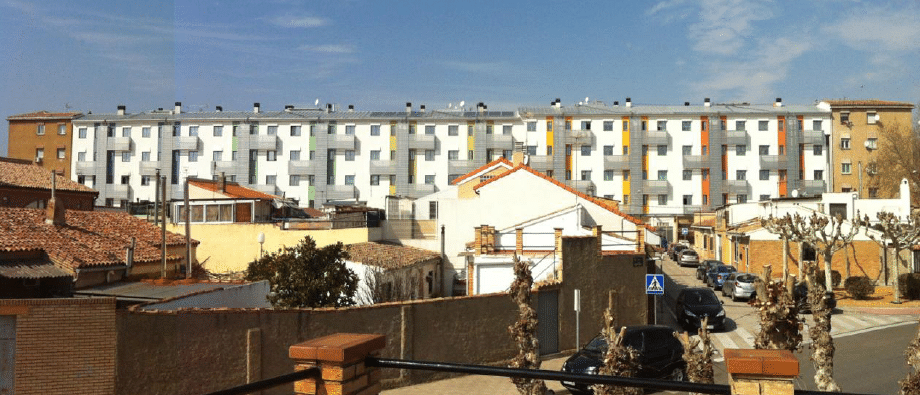-
Phone Number
-
Email Address
This is an example of energy rehabilitation of a complete neighborhood in the Navarrese town of Tudela , and which is part of the Project European ECO-CITY , in the CONCERTO program, initiative of the European Union that seeks to reduce the CO2 emissions through improved energy efficiency and the installation of renewable energies in which 44 participate European cities from 18 different countries.
It covers the rehabilitation of a total of 10 blocks with a total of 146 homes affected and the renovation of the heating installation of 31 buildings (486 housing) in the district of San Juan Bautista. It emphasizes that the homes in said neighborhood correspond to social housing built between the years 50 to 70.
From the point of view of energy efficiency, it is it dealt with buildings that presented a deficient envelope heating with very basic construction systems, without any thermal insulation, having been carried out in a continues certain interventions or processes of self-construction, and in the case of the facilities these were quite inefficient, therefore of deficient energy efficiency in the set of buildings considered, with high energy demands and very low performance in their thermal installations. It should also be noted that initially presented significant problems in terms of accessibility that were corrected in the action.

Content menu:
At first, three areas of the neighborhood were chosen in which that included the four building types that corresponded to the largest social collective housing seniority in that neighborhood. The interventions that established within said scope were the following:
Within them was contemplated the rehabilitation of the common areas of the buildings as well as the houses of several housing blocks and improvement of facilities in other cases, so that they can be specified in the following interventions:
Insulation systems were used in the blocks thermal on the outside or SATE, by means of graphite EPS plates 60 mm, finished with a flexible stucco, both for the exterior façades as well as those of interior patios and median views. Insulation was also placed under the flooring of ground floor houses using mineral wool of 100mm. thick and on the cover extruded polystyrene of 60mm. thick.
The ground floors have been reinforced with a Coteterm-type anti-vandal mortar, with a reinforcing mesh. It should be mentioned that one of the requirements demanded in the proposed by the Concerto program , required that The thermal envelopes had to exceed the requirements of the Technical Code in your Basic Energy Saving Document (DB-HE).
The ground floor dwellings were insulated with a mortar 60 mm thick thermal insulation from Weber.
In the façade openings, we proceeded to place double window, duplicating the carpentry on the outside by means of sliding windows and using low-emission glass of the type Guardian Sun and thicknesses 4/8/6.
Lattice closures were arranged to reduce the excess solar radiation in summer and also be able to hide the new route through which the facilities run, and also the air conditioning machines and the clotheslines.
Regarding accessibility, we will carry out the actions and the necessary measures were adopted so that the works could be executed in such a way that during the period of the same their owners did not have to abandon the houses.
This action focuses on improving the installation of central heating in the San Juan neighborhood
Baptist. These are facilities that have the same age of the buildings, built between the 60s and 70s and in a poor state of conservation, in such a way that They sought two essential objectives:
This project puts on the table that; both the measures to improve the envelope such as the renovation of heating in buildings from the 60s to 70s is possible and In addition, the results can be extended to apply them to other buildings that were built at that time. era . The project thus manifests it by indicating the transferability of action measures not only to other Areas of the Barrio de Lourdes or Tudela, but to other towns in Navarra that have neighborhoods executed along throughout the years 50-60 and 70.
It is also important to add that the study contemplated that the buildings already rehabilitated had to incorporate facilities monitoring system that would allow information to be recorded regarding their energy consumption in the minimum period of one year, as required by the European Program Concert previously mentioned.